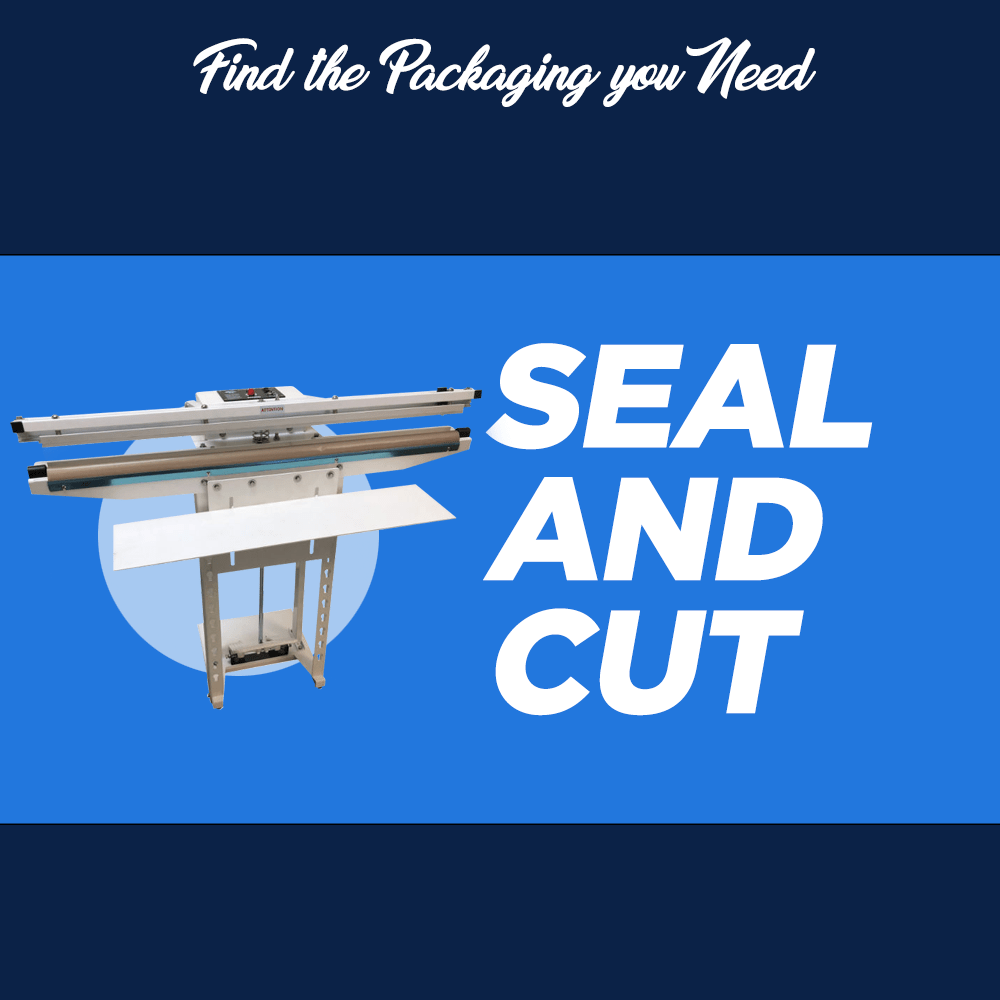There are two main types of sealers: (1) impulse heat and (2) direct heat.
Impulse sealers require no warm up time and seal by applying a pulse of energy to the sealing area, followed immediately by cooling. Impulse sealers only use power when the jaw is lowered. We recommend an impulse sealer for any thermoplastic material such as polyethylene (PE) or polypropylene (PP) which requires a lower seal temperature. Materials for impulse sealers: Polyethylene, Polyurethane, Polyvinylchloride, Pilofilm, Polyvinyl Alcohol, Saran, Nylon, bubble packs, padded mailers, foil, coated bags, Kel-F, Polyflex, Mylar, Tyvek, and other thermoplastic material. Impulse sealers are easy to use (no warm-up time), economical (electricity used only during sealing process), and safe (no component is always hot).
There are different types of impulse sealers based on type of material and usage:
- Hand sealers can seal poly material up to 10mil thickness
- Pedestal Type / Foot sealers can seal poly material up to 15mil in thickness
- Auto sealers can seal poly material up to 15mil in thickness
- Double impulse sealers (automatic and foot options) can seal poly material up to 20mil in thickness (We recommend double impulse for heavy duty applications)
- Sealers w/cutters seal and trim excess material (tubing) in order to make customized bags
Direct heat (constant heat) sealers maintain constant heat in both jaws. Direct heat sealers use power as long as the machine is turned on. As a result, direct heat sealers possess better heat penetration in roder to seal thicker materials. We recommend a direct heat sealer for materials such as coated aluminum foil, poly cello films, gusset bags, coated Kraft papers, waxed paper, cellophane, mylar, coated PP, and other thicker materials.
We also include other types of sealers used for more specific types of applications:
Vacuum sealers remove air from the product before sealing into an impermeable package. We recommend vacuum sealing in order to prevent oxidation, spoilage or corrosion. Barrier bags are used because PP and PE bags are both porous and cannot be used for long term storage.
Clam shell sealers are ideal for welding clam shell packaging.












